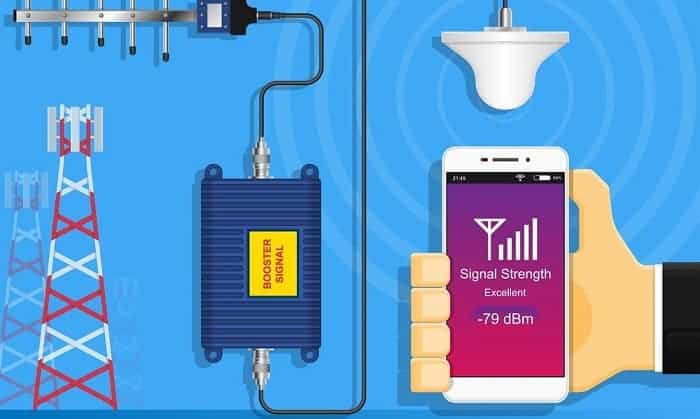What is radio frequency used for?
Radio frequency (RF) is a measurement representing the oscillation rate of electromagnetic radiation spectrum, or electromagnetic radio waves, from frequencies ranging from 300 gigahertz (GHz) to as low as 9 kilohertz (kHz).RF is used in various electronics and appliances, which include radio and television broadcasting, cellular telephones, satellite communications, microwave ovens, radars, and industrial heaters and sealers. These are just a few applications. Electromagnetic waves are measured by wavelength and frequency.
What is a radio frequency jammer?
Radio Frequency Jammer is the disruption of radio signals through use of an over-powered signal in the same frequency range.
When most people think of frequency jamming, what comes to mind are radio, radar and cell phone jamming. However, any communication that uses radio frequencies can be jammed by a strong radio signal in the same frequency. In this manner, Wi-Fi may be attacked with a network jamming attack, reducing signal quality until it becomes unusable or disconnects occur. With very similar methods, a focused and aimed signal can actually break access point hardware, as with equipment destruction attacks.
Frequency jamming can be benign or malicious. Police and the military often use jamming devices to limit or disrupt communications during hostage situations, bomb threats or when military action is underway. Less benignly, jammers have also been used to disrupt First Amendment rights in peaceful protests.
Guide on How to Make a Radio Frequency Jammer
1. Build the driver circuit
Wind the primary and feedback coils in the same direction. To protect the transistor from voltage spikes, a fast diode is advised.
Make use of a big heatsink. The driver is a prototype with a small heatsink, and the transistor heats up quickly.
The flyback primary and secondary are not soldered to the driver circuit; instead, screws are used to secure them so that different flybacks can be mounted later. You’ll need an antique black-and-white TV flyback transformer.
2. Prepare the flyback
Take out the original main coil of the flyback.
Make a little hard paper cylinder and stick the primary and secondary coils to it by using glue. After that, put in place the secondary and the new primary along with the feedback.
While setting up the flyback, remember to position the ferrite cores while ensuring the plastic plates are between them. This way, the ultrasonic vibration is reduced.
The coil thickness is 1 mm, and the magnet wire is 0.1 mm (38 AWG). The internal arc between the windings is avoided. Paraffin wax is used to impregnate the coil.
The flyback requires a 20W power supply to operate and produces 8-9 mm sparks. (It can be stretched to 20mm during operation.)
Because high secondary voltage can easily ruin the original coil, a homemade thin secondary is advised if you want to pump more watts into the flyback. The coil must be no more than 1 mm thick! In this case, instead of paraffin wax, use epoxy! Paraffin is easily melted.
To get a higher voltage, connect two or three coils in series. Many directions for making homemade flyback secondary coils may be found online.
3. Ensure the flyback & the driver are connected; attach the antenna to the spark gap
The spacing between the sparks is 2-3 mm. The antenna is a 2 m wire. Because of the voltage drop caused by the antenna, the 8 mm spark length has been reduced to 2-3 mm.
The jammer has a range of 10-15 meters, and the range can be extended by using a 6-8 m antenna.
Longer distances produce more MW noise; however, VHF noise can be detected at 8-10 m.
The jammer could even jam beyond the VHF band or longwave band.
Bonus Tips & Knowledge About Radio Frequency Jamming System
By tweaking the defaults to achieve peak resonance, the DIY RF jammer’s performance might be significantly increased. The following are some considerations that can be used to accomplish this:
- Connect a DC voltmeter with a range of 0 to 10 volts to the ground line and the point “test.”
- Adjust the 22p trimmer on the right side so that meter’s reading is a maximum of 3V.
- This may cause the system’s initial frequency to be disrupted (the system you may have planned for jamming purposes).
- Return to the left of the 22p trimmer, and fine-tune it once more to restore the proper frequency.
Your circuit’s peak resonance is now set, and you may expect it to perform at its best.
Conclusion
Whether you’re a techie or not, Radio Frequency Jammers aren’t easy to make. For the same price you can order such products on jammers.store. Please use it under reasonable and legal conditions, and wish you a happy shopping.
Related articles
4 Best Signal Jammer on Jammers.store
How does Cell Phone Jammer Work?
How to Test Cell Phone Signal Strength on Your Cell Phone?
How do GPS Jammers work? What are the Best GPS Jammers or Blockers for Anti GPS Tracker?
